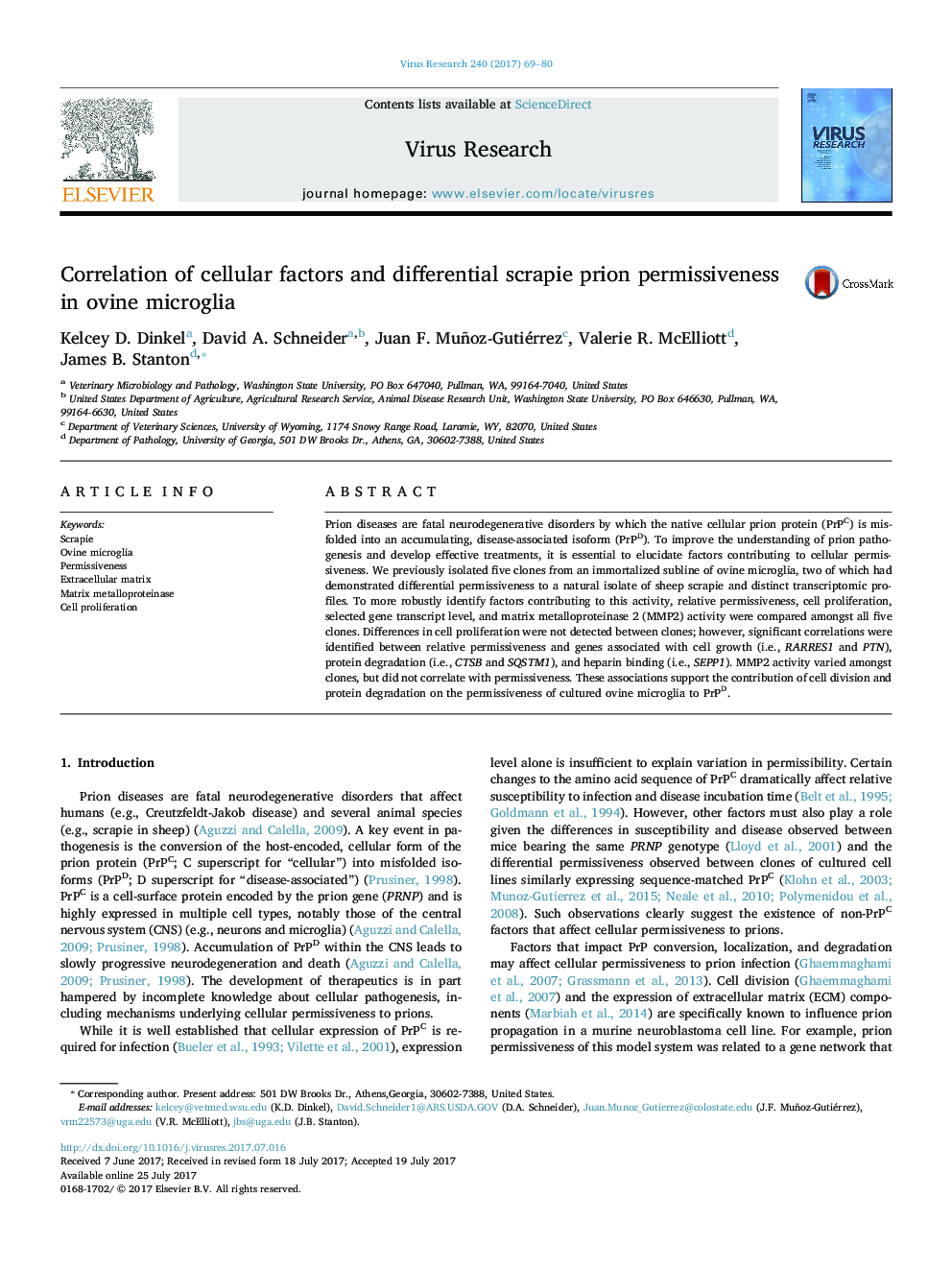| Article ID | Journal | Published Year | Pages | File Type |
|---|---|---|---|---|
| 5675292 | Virus Research | 2017 | 12 Pages |
â¢Clonal differences in scrapie permissiveness were detected.â¢The rate of cell proliferation did not differ between clones.â¢Cell growth and protein degradation genes correlated with scrapie permissiveness.â¢Scrapie permissiveness negatively correlated with heparin-binding genes.â¢Variable MMP2 activity was observed, but did not correlate with permissiveness.
Prion diseases are fatal neurodegenerative disorders by which the native cellular prion protein (PrPC) is misfolded into an accumulating, disease-associated isoform (PrPD). To improve the understanding of prion pathogenesis and develop effective treatments, it is essential to elucidate factors contributing to cellular permissiveness. We previously isolated five clones from an immortalized subline of ovine microglia, two of which had demonstrated differential permissiveness to a natural isolate of sheep scrapie and distinct transcriptomic profiles. To more robustly identify factors contributing to this activity, relative permissiveness, cell proliferation, selected gene transcript level, and matrix metalloproteinase 2 (MMP2) activity were compared amongst all five clones. Differences in cell proliferation were not detected between clones; however, significant correlations were identified between relative permissiveness and genes associated with cell growth (i.e., RARRES1 and PTN), protein degradation (i.e., CTSB and SQSTM1), and heparin binding (i.e., SEPP1). MMP2 activity varied amongst clones, but did not correlate with permissiveness. These associations support the contribution of cell division and protein degradation on the permissiveness of cultured ovine microglia to PrPD.
